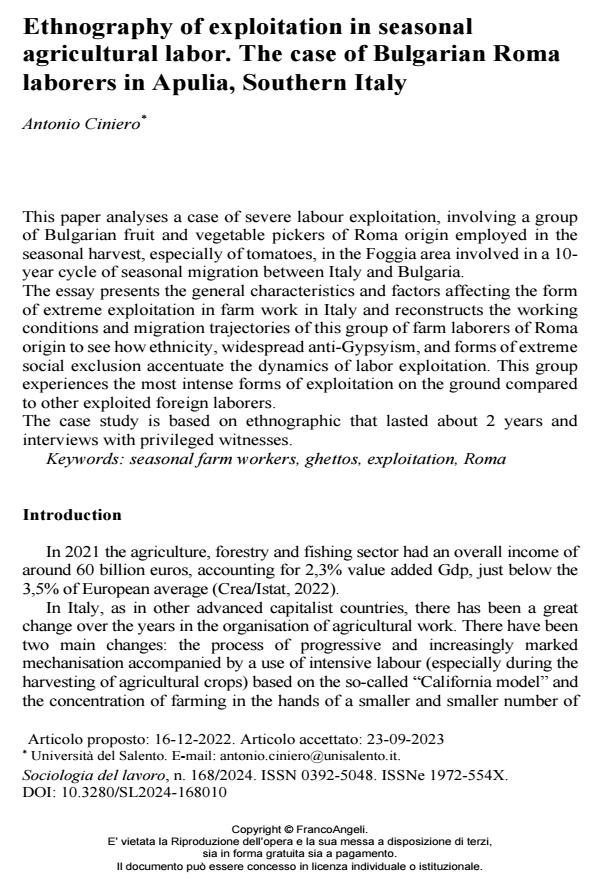Ethnography of exploitation in seasonal agricultural labor. The case of Bulgarian Roma laborers in Apulia, Southern Italy
Journal title SOCIOLOGIA DEL LAVORO
Author/s Antonio Ciniero
Publishing Year 2024 Issue 2024/168
Language English Pages 20 P. 204-223 File size 212 KB
DOI 10.3280/SL2024-168010
DOI is like a bar code for intellectual property: to have more infomation
click here
Below, you can see the article first page
If you want to buy this article in PDF format, you can do it, following the instructions to buy download credits

FrancoAngeli is member of Publishers International Linking Association, Inc (PILA), a not-for-profit association which run the CrossRef service enabling links to and from online scholarly content.
This paper analyses a case of severe labour exploitation, involving a group of Bulgarian fruit and vegetable pickers of Roma origin employed in the seasonal harvest, especially of tomatoes, in the Foggia area involved in a 10-year cycle of seasonal migration between Italy and Bulgaria. The essay presents the general characteristics and factors affecting the form of extreme exploitation in farm work in Italy and reconstructs the working conditions and migration trajectories of this group of farm laborers of Roma origin to see how ethnicity, widespread anti-Gypsyism, and forms of extreme social exclusion accentuate the dynamics of labor exploitation. This group experiences the most intense forms of exploitation on the ground compared to other exploited foreign laborers. The case study is based on ethnographic that lasted about 2 years and interviews with privileged witnesses.
Keywords: seasonal farm workers, ghettos, exploitation, Roma
Antonio Ciniero, Ethnography of exploitation in seasonal agricultural labor. The case of Bulgarian Roma laborers in Apulia, Southern Italy in "SOCIOLOGIA DEL LAVORO " 168/2024, pp 204-223, DOI: 10.3280/SL2024-168010